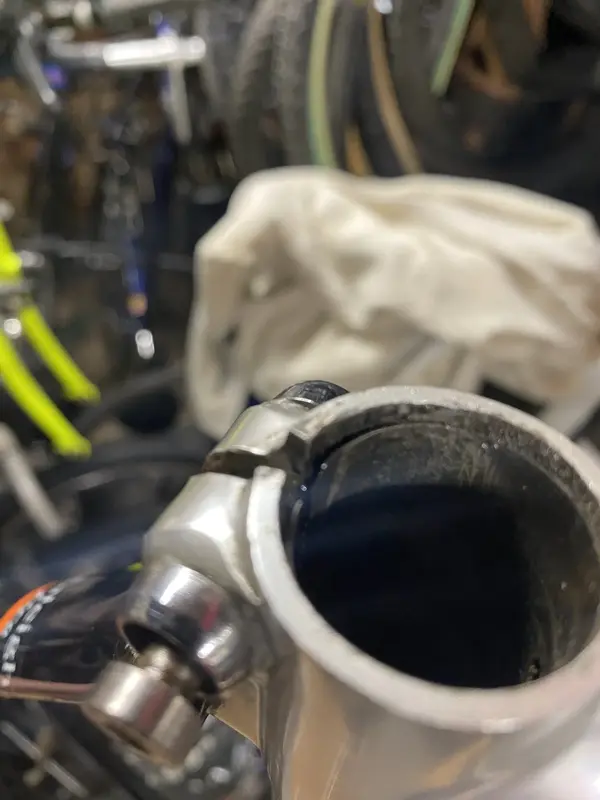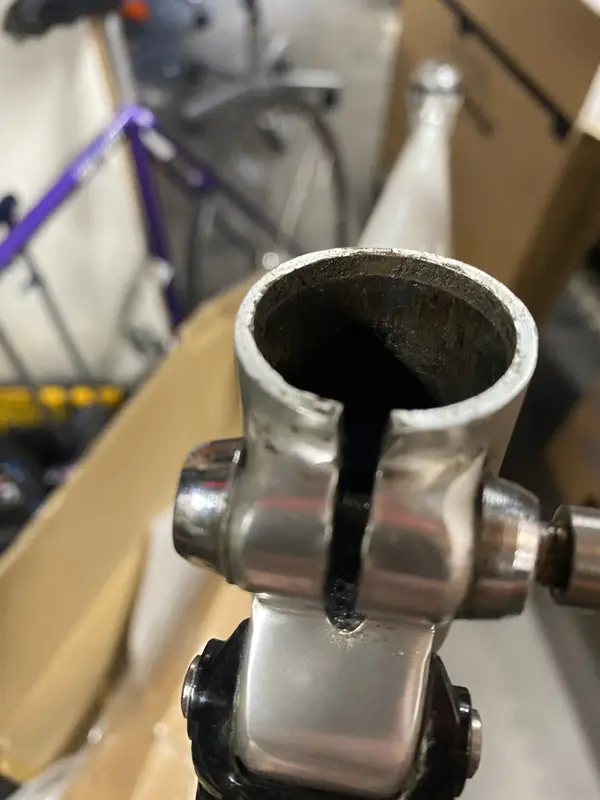Yeah I agree with this. The Dynatech bonding process negated the need for butting as the tubes wouldn’t be suffering any strength loss through brazing.I believe there was no direct equivalent conventionally numbered (3figure) Reynolds tubeset for any of the bonded tubesets. The higher spec tubes on conventional frames are thinner gauges so the hole through them is larger but on the bonded frames lugs were internally sleeved into the tubes and common to all the frames so the internal dimensions of any tube in a specific position had to be common regardless of the ‘poshness’ of the tubeset. Take that little problem and add in the fact that brazing or soldering a frame affects the finished strength of the tube there was not much point trying to manufacture sets that exactly matched Reynolds conventional tubes.
I used to own a Pro but I got run over and the frame was snapped beyond repair! Interested to see how it was put together, I cut up the downtube; there was no evidence of conventional butting - it was super thin end to end…


